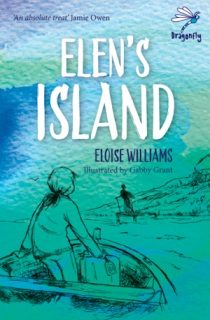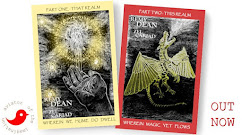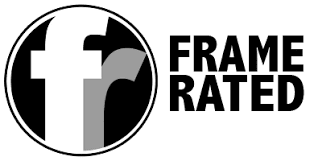Adrian Tchaikovsky attracted plenty of favourable attention with his 2008 debut novel, Empire in Black and Gold, the first in the Shadows of the Apt series. By then, he'd already been writing for about a decade and a half and this momentum continued to drive him on. He now has more than 40 published Fantasy and Science Fiction stories to his name - novels, novellas, anthologies. He won the 2016 Arthur C Clarke Award for his novel Children of Time, a story of humanity’s struggle for survival on a terraformed planet, and his latest novel Doors of Eden will be published in paperback by Pan Macmillan's Tor on 22 September 2020.
The Lincolnshire born author studied Psychology and Zoology at Reading before working in law and developing a full-time writing career. He is a keen gamer and live action role playing, and also an amateur actor. He now lives in Leeds with his wife and son. In 2019 he was awarded an honorary doctorate of Arts from the University of Lincoln.
Adrian found time to talk with Kim Vertue for The Scrawl about inspiration, speculation, evolution and the fall and rise of civilisation, among other things...
What was the first book you can remember reading that really hooked you and carried you off into its world?
Dianne Wynne Jones, Power of Three. Still a book I revisit. It not only provides a wholly immersive fantasy world in and of itself, but it then pulls not one but two switches of perspective on the reader. Absolutely blew my mind. The other contender is probably Pratchett’s Strata for very similar reasons, but I think I must have come to that a bit later.
What ‘woke you up’ to the idea of being a writer?
Weirdly, it was Weiss & Hickman’s Dragonlance books. I’d been a keep R.P.G.er for a while by then, and here was someone’s D&D campaign written up as a set of novels, and I thought, ‘I could do that.’ And, of course, I was 18 and clueless and I absolutely couldn’t, but I kept cracking away at it and eventually I got there.
What have been your favourite books or authors, and what did you learn from them?
Gene Wolfe and Mary Gentle, for their complexity of world and writing and the fantastical games they play with their readership. Peter S Beagle for his poetic prose and exquisite use of language.
What are your favourite stories from other media formats?
The recency effect says I should mention Dark, which I’ve just finished and completely blew my mind. My favourite films are probably Arrival and Ex Machina, really intelligent science fiction put forward with an understated subtlety. For TV, I’m a big fan of Farscape, which I think was just about the perfect mix of heart and mind when it came to characters and writing. I loved Blacks Sails as well, for something more recent. For comics, I’m a big fan of Kieron Gillen and Paul Cornell, and I love both incarnations of Umbrella Academy.
We understand you role play. Would you say this was a major source of inspiration for you?
I absolutely do, and my first books, the Shadows of the Apt series, evolved directly from that. Gaming is definitely still an influence, but so is just about everything I come across. It all goes into the mill.
When developing your ideas, does world or story come first? Or do the characters? Does it vary?
World first, always. My characters and plotlines arise organically from the worlds I want to write in. I always want to explore somewhere, and when I’ve worked the world up to a sufficient level of reality, the people, their concerns and their fracture points will arise organically out of the setting.
In Doors of Eden you have fun describing various ‘evolutions’ and how other civilisations may have developed. How did you dovetail research into speculation until if felt exactly right for your story? Do you consult ‘boffins’, for example?
When I’m writing what I’d consider ‘hard SF’ (for a given value of same) I do try and get the science as right as I can, which will often mean consulting actual boffins. The acknowledgement of Doors has quite a list of people who’ve helped me by informing beforehand or fact-checking after – same for Children of Ruin where I had all sorts of fun talking spaceship design with the experts.
Do you ever have to resist spending too long on research?
Sometimes I have to abandon something when it turns out my limited understanding of the science was way off the mark. Children of Time was originally going to use time distortion from travelling at near-light speeds instead of the repeated wake-sleep pattern that Mason goes through, but it didn’t make logical sense, and I think what I ended up with is better.
You include LGBTQ and alien characters – this is a great tradition in SF, yet there is heightened sensitivity around interpreting another’s point of view which is linked to this creative freedom. Do you have a checklist or approach in developing these characters, to succeed in such a rounded way?
I don’t have a checklist per se. I try and work with what I’ve learned from people I know, and beyond that I just do my level best to step out of my place of relative privilege and empathise, and treat people like people.
I’m not usually trying to write about that aspect of a character, because I suspect that’s where I would cross a line. But I do feel it’s a duty to write about a diverse cast, because the world is a diverse place, and also, it makes for a more interesting book that one that’s wall-to-wall people like the one I see in the mirror.
As for the aliens – I love to write aliens. I love to make them complex and, ideally, present them from inside their own sensoriums and minds.
I plot and plan heavily, and can’t really imagine trying to write any other way - although who knows, maybe one day I’ll do the other thing, though it feels like jumping out of a window and trying to knit a safety net on the way down!
Do you map out the outline scene by scene, and if so, does this take longer than writing the first draft?
I don’t always stick to the plan, and the midsection of any good story always has a certain amount of fluidity, but most of the time I have a good idea of where I’m going and that lets me build a lot of structure like foreshadowing in on the first pass, and usually gives me a first draft that is the right shape and doesn’t need serious tinkering.
Have you developed a writing regimen and routine, if so, could you describe it? For example, do you usually write in a study with a lovely view? Do you listen to certain music to evoke certain moods, and do you have a favourite food or drink to help you along?
Right now, I write every day, mostly in the morning. I listen to a lot of music, mostly film and game soundtracks most of the time. I would normally get out of the house to write, but right now going to a coffee shop isn’t really an option, so I’ve got used to writing at home.
How has your writing developed? Has feedback from fans and other media fed into this, as well as speculation on the ‘interesting times’ we are living through?
I hope I’ve got better as I’ve gone on. I think my actual style is still being honed, and I can look over earlier work and see how I might do things differently now. I try not to be reactive to the way people perceive my work, but if I’m being honest it does have an impact, and I do try and take on board valid criticism – which is still a hard thing to do even after so many years in the game.
Thank you, Adrian Tchaikovsky, hopeful SF seems something that we need more than ever!
Adrian Tchaikovsky was talking with Kim Vertue
You may also like:




































